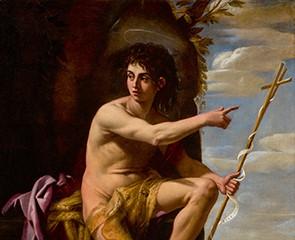In the 17th century, Roman painters constantly influenced each other’s work. Through friendly competitions or rivalries, they observed their peers’ work, recreating styles and themes of their contemporaries.
It was in this environment that Giovanni Baglione (1566–1643), a Roman Mannerist painter who focused on technique and style, first started his own creative journey that culminated in a stunning painting of St. John the Baptist and produced a book of art history of the period.






